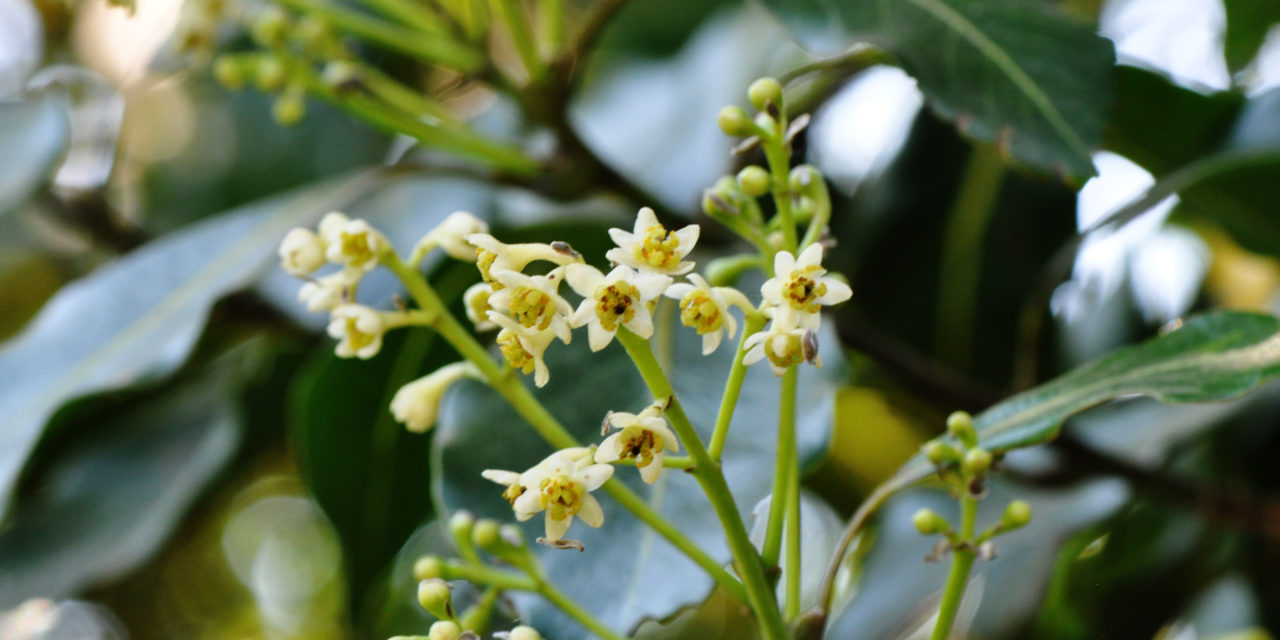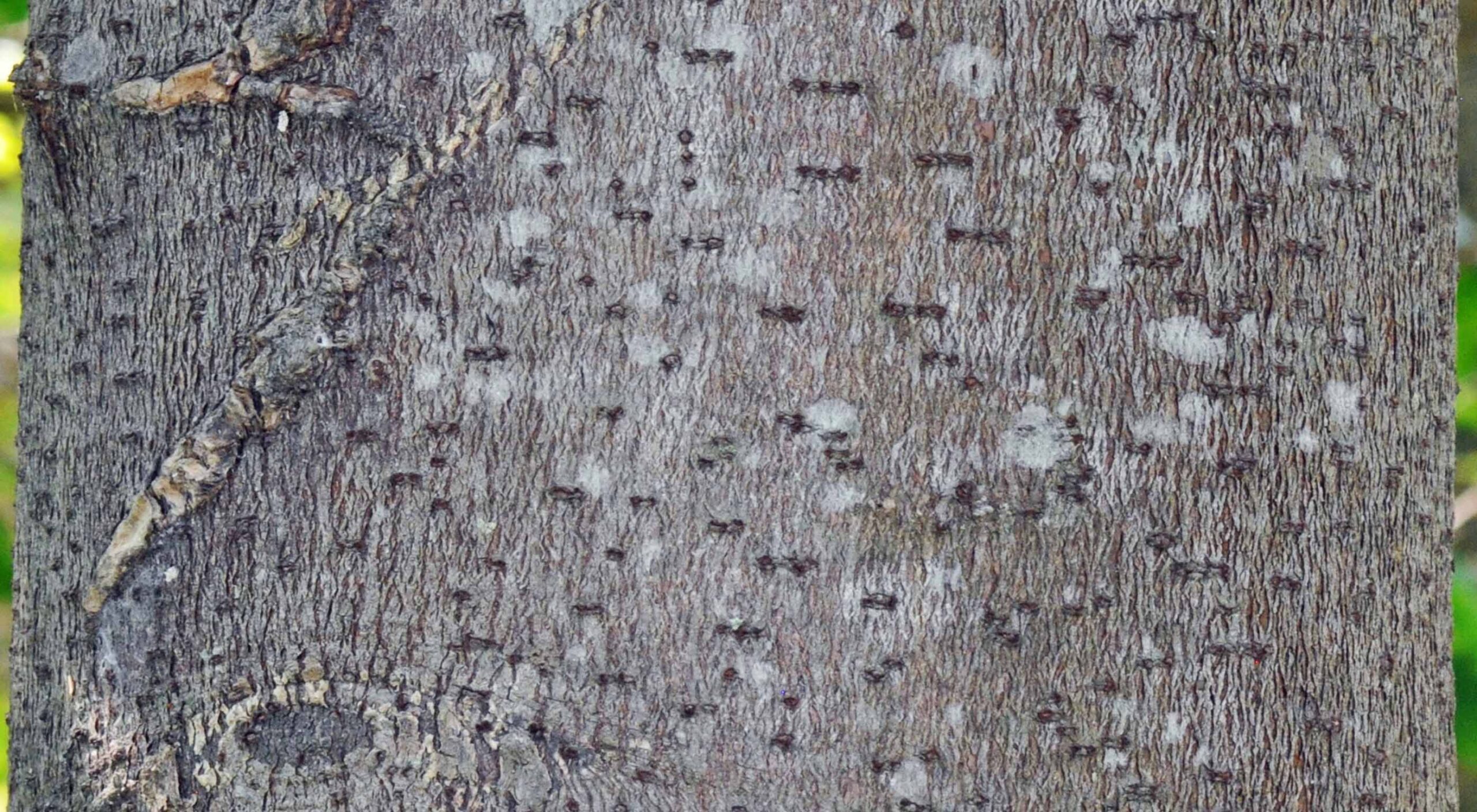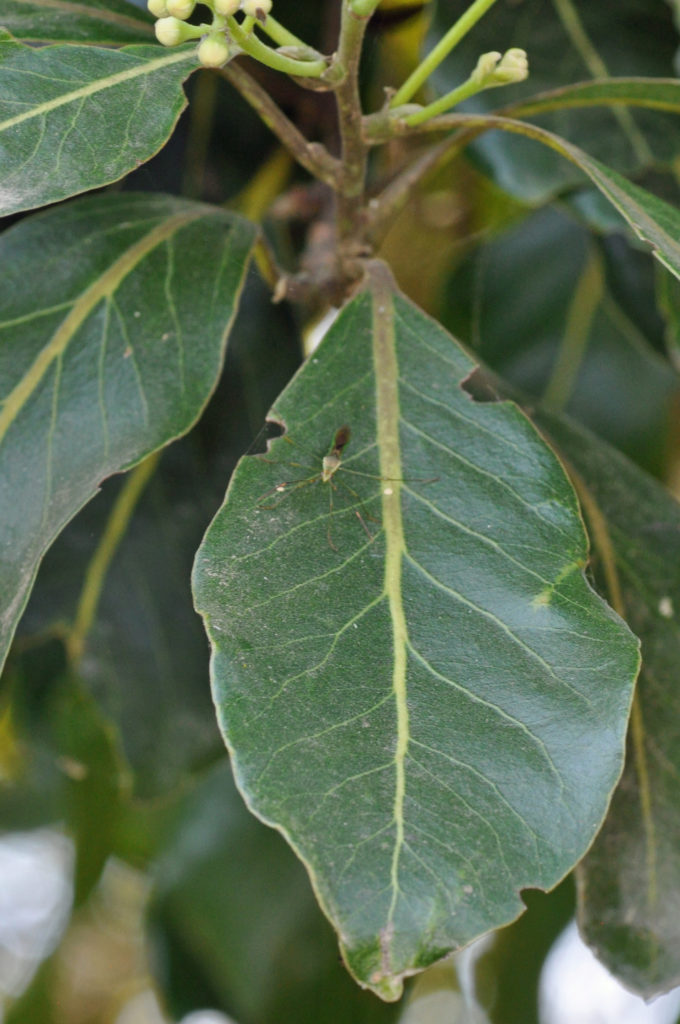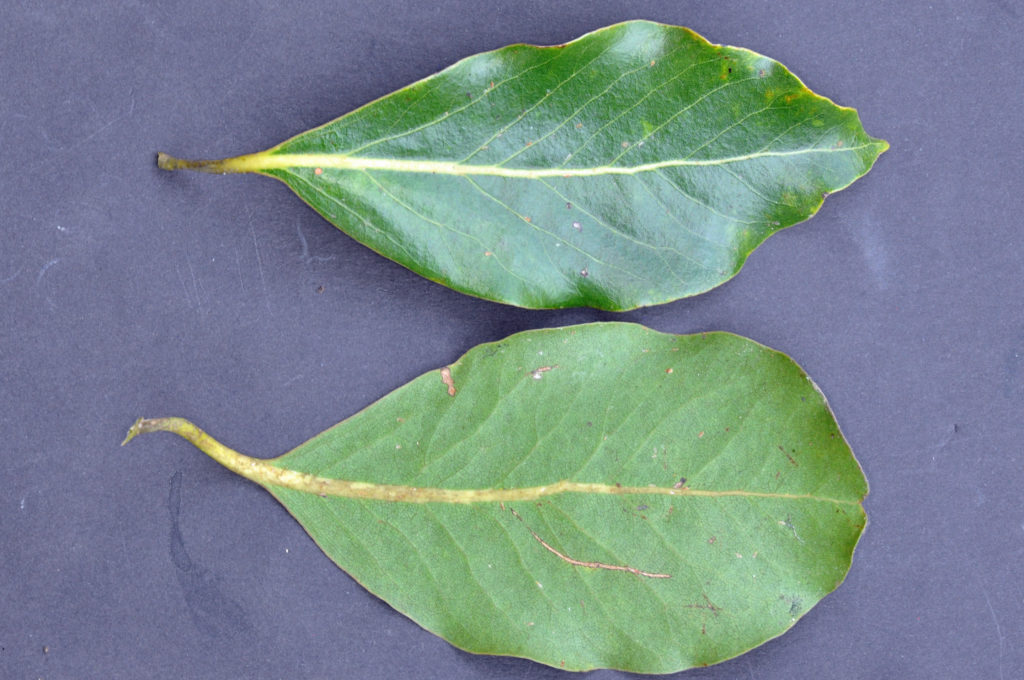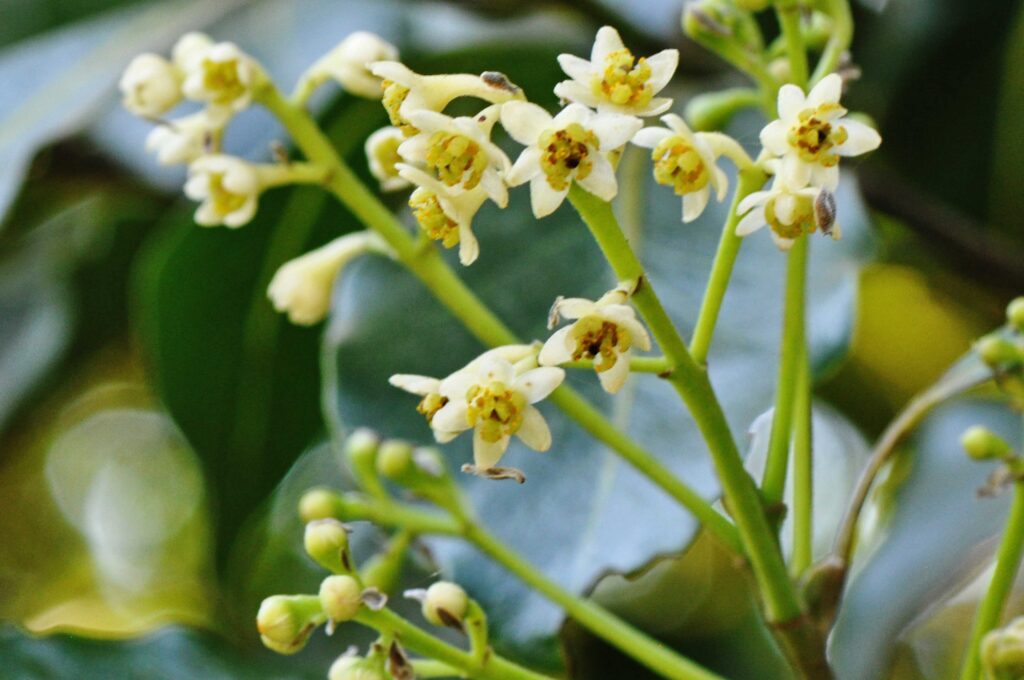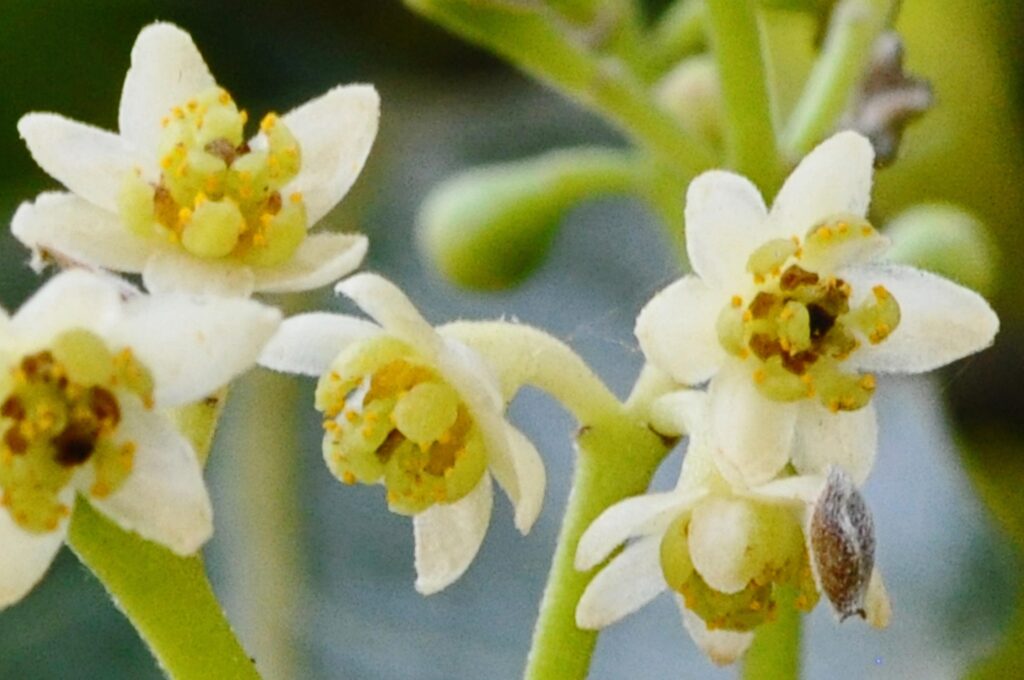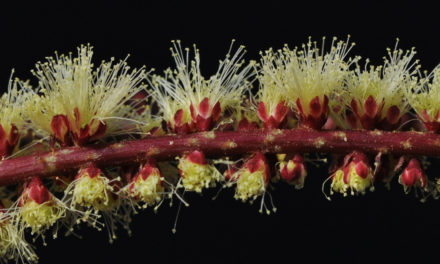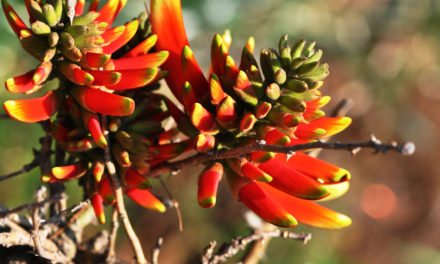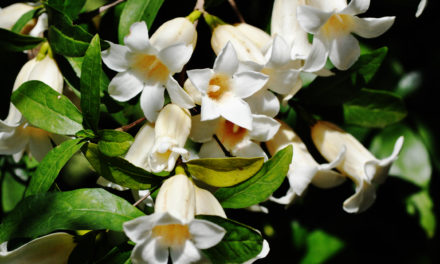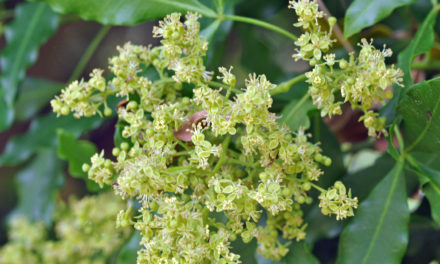General Info – summary
This impressive evergreen Tree may reach 20m high – without lower branches. The rough bark is brown to dark grey. Alternate, simple Leaves lack stipules and are relatively long. The unisexual or bisexual Flowers have whitish tepals, are regular and develop in panicles. The perianth has 2 equal whorls of 3 tepals. Fruit is a large acorn-shaped berry with a cup-like receptacle. Cut wood does not smell.
Description
Ocotea kenyensis
Previous Names: Ocotea gardneri, Ocotea viridis, Tylostemon Kenyensis.
SA Tree No. 119.
Common names: (Afr) Baster-stinkhout, Noordelikestinkhout, Noordelike-stinkhout, Transvaal-stinkhout, Vals-stinkhout. (Eng) Bastard Stinkwood, False Stinkwood, Mock Stinkwood, Northern Stinkwood, Transvaal Stinkwood. Here the word stinkwood is false. (isiXhosa) Umnukane. (isiZulu) Umnukani. (Northern Sotho) Modula-tshwene, Motshekga. (Tshivenda) Muangata.
Family Lauraceae: (Laurel and avocado family) has in excess of 2 500 species in about 42 Genera. Species variation is substantial. They fit in the dicotyledonous group (with 2 embryotic leaves/cotyledons). The Lauraceae has 5 genera and 8 or 9 indigenous species in South Africa. Most are evergreen trees. The 3 indigenous tree genera are Cryptocarya, Dahlgrenodendron and Ocotea. These trees may be buttressed. The alternate or opposite Leaves are simple and usually leathery, aromatic and coriaceous. Stipules are absent. The small, green or yellow, unisexual, bisexual or mixed Flowers are actinomorphic. The Perianth is not differentiated into sepals and petals and is usually 3-merous with equal, free Tepals in 2 rows. Staminodes and Stamens occur in 3-4 whorls. The Anthers are basifixed and their 2-4 theca open by valves. Fruit are drupes with thin endocarps. Seeds lack endosperm and have relatively large, fleshy cotyledons.
Name derivation: Ocotea from the vernacular name in French Guiana. kenyensis – first collected and named in Kenya. There are 2 species of this genus in the South Africa. The other is O. bullata (real stinkwood).
Name derivation: Ocotea from the vernacular name in French Guiana. kenyensis – first collected and named in Kenya. There are 2 species of this genus in the South Africa. The other is O. bullata (real stinkwood).
Conservation Status: Vulnerable. Assessment: 2008 (V.L. Williams and D. Raimondo). There are probably less than 1 000 plants in South Africa. Bark harvesting may become a problem. No decline reported.
Tree
This rare, straight stemmed Tree is up to 20m or more in height (often smaller) and the lower – later branchless trunk has a diameter of up to 1,5m. The rounded Crown is much branched. Coppice growth occurs. Here, when stems are cut or burned, new growth occurs from the stump or roots). In this case, regrowth is from the base. Root suckers are common. The Bark is greyish brown and eventually peels off in large irregular scales or remains smooth. The bark has relatively small, slightly raised, and almost circular dark woody dots that often appear close together (photo 748). The underbark is orange. Twigs (1-year-old current branch segments) are angular.
- 748R. 2014/09/14. Lowveld NBG. Photo: David Becking.
Leaves
This evergreen tree has wavy, hairless, leathery and alternate Leaves (photo 752) that are simple (has a single blade, which may have incisions that are not deep enough to divide the blade into leaflets). They are completely smooth, leathery. Leaves are dark green and shiny above and lighter below (photo 753). The leaves are broadly elliptic to ovate and up to 22 x 10cm – usually less. The leaves are usually longer and shiner than in the true stinkwood – Ocotea bullata). N.B. The length of the petiole is not included in leaf length. The wavy Margin (photo 752) may be reddish and is entire (with a continuous margin, not in any way indented). The prominent broad Midrib is yellowish (photo 752) and reaches to the leaf apex. The faintly aromatic Blade is glossy green above, lighter below and lacks pits and bumps (present in Ocotea bullata). There are 8-10 conspicuous “pairs” of side veins. (6-7 pairs in Ocotea bullata and here pits are present). The Apex is acute to acuminate (said of an acute apex whose sides are somewhat concave and taper to a protracted point). The Base is rounded or cuneate (wedge-shaped – photo 753). The Petiole (leaf stalk) is up to 1,8cm long. Stipules (basal appendages of the petiole) are absent.
- 752. 2014/09/14. Lowveld NBG. Photo: David Becking.
- 753. 2014/09/14. Lowveld NBG. Photo: David Becking.
Flowers
The white to cream coloured Flowers are actinomorphic (Regular, symmetrical. Flowers are vertically divisible into similar halves by more than 1 plane passing through the axis). The drooping axillary (the upper angle between the petiole and the stem) flowers develop near branch ends in branched sprays. They are often in Panicles (indeterminate, branched inflorescence with stalked flowers) up to 7cm long (photo 749). There are usually 6 undifferentiated parts to the Perianth (the 2 floral envelopes considered together; a collective term for the calyx and corolla; perigone – photo 750). Here the individual parts are called Tepals and here they are in 2 whorls of 3 each. In these Bisexual or unisexual flowers, the Stamens are in 3-4 whorls with the outer 3 fertile and the inner whorl, when present, reduced to Staminodes (sterile stamens). If present the Filaments, are very short. The Anthers in the outer whorls are 4-thecous (have 4 pollen sacs) and introrse (turned or faced inward or toward the axis). There is a single Pistil (a unit of the Gynoecium, the female element of the flower, composed of the Ovary, Style and Stigma) with a superior Ovary, one short Style and a 2-lobed Stigma (photo 750). In unisexual Male Flowers, the ovary is sterile, stalk-like or absent. In the unsexual Female Flowers, the stamens are rudimentary and lack anthers. (Oct-Jan). After pollination, the flowers turn brownish. (Nov-Jan).
- 749. 2014/09/14. Lowveld NBG. Photo: David Becking.
- 750. 2014/09/14. Lowveld NBG. Photo: David Becking.
Fruit
The Fruit is a drupe-like Berry (pulpy, indehiscent fruit like a grape or tomato) that is up to 2,2 x 1,2cm. The berry resembles an acorn with at least half of the fruit enclosed by the enlarged cup-shaped receptacle (that expanded tip of the flower stalk from which the floral parts develop. It is greatly expanded in the Asteraceae and Ficus – figs). (Jan-Mar+).
Distribution & Ecology
This Tree has a sporadic appearance and grows best above 1 000m altitude in well-drained soils, in mist belt forests on the escarpment e.g., in Riparian Forest (is a forested or wooded area of land adjacent to a body of water). They usually grow at medium to high altitudes where the annual precipitation is greater than 1 500mm. Trees are relatively isolated and geographically widely separated from each other. Location: Eastern Cape – from Port St Johns, KwaZulu-Natal in the Ngome Forest – East of Vryheid which forms part of the Ntendeka Wilderness Area, Mpumalanga, Limpopo e.g., Hangklip Forest – in the Soutpansberg mountains -near Louis Trichard, Eswatini (Swaziland), Zimbabwe, Zambia, central and Northern Mozambique, Tanzania, Rwanda, Kenya, Ethiopia and Sudan. There are 7 species of Ocotea in Africa and 2 in South Africa. Birds consume the fruit and probably disperse the seeds.
Ethnobotany
The Wood makes good quality yellowish timber, which darkens with age and has blackish markings. The freshly cut wood has a sweet smell – it does not smell badly like Ocotea bullata (stinkwood). In the real black stinkwood (Ocotea bullata), cut wood does smell. Ocotea kenyensis wood is used for fuel, charcoal manufacture, light construction, ladders and for lathe work. The wood is reasonably resistant to termite and marine borer attacks but is sensitive to beetle (Genus Lyctus) attack. Propagation is best from root suckers. The Bark is used in traditional medicine.
References
Boon, R. 2010. Pooley’s Trees of eastern South Africa. Flora and Fauna Publications Trust, Durban.
Burrows, J.E., Burrows, S.M., Lotter, M.C. & Schmidt, E. 2018. Trees and Shrubs Mozambique. Publishing Print Matters (Pty) Ltd. Noordhoek, Cape Town.
Coates Palgrave, M. 2002. Keith Coates Palgrave Trees of Southern Africa, edn 3. Struik, Cape Town.
Lawrence, G. H. M, 1951. Taxonomy of Vascular Plants, The Macmillan Company, New York. Tenth Printing 1965.
Palmer, E. & Pitman, N. 1972. Trees of southern Africa, Balkema, Amsterdam, Cape Town.
Schmidt, S. Lotter, M. & McCleland, W. 2002. Trees and Shrubs of Mpumalanga and the Kruger National Park.
van Wyk, B. & van Wyk, P. 1997 Field guide to Trees of Southern Africa, Struik, Cape Town.
Williams, V.L. & Raimondo, D. 2008. Ocotea kenyensis (Chiov.) Robyns & R.Wilczek. National Assessment: Red List of South African Plants version 2020.1. Accessed on 2023/09/20.
http://www.merriam-webster.com/dictionary/coppice
https://en.wikipedia.org/wiki/Ngome_Forest
http://uses.plantnet-project.org/en/Ocotea_kenyensis_(PROTA)
http://posa.sanbi.org/flora/browse.php?src=SP

